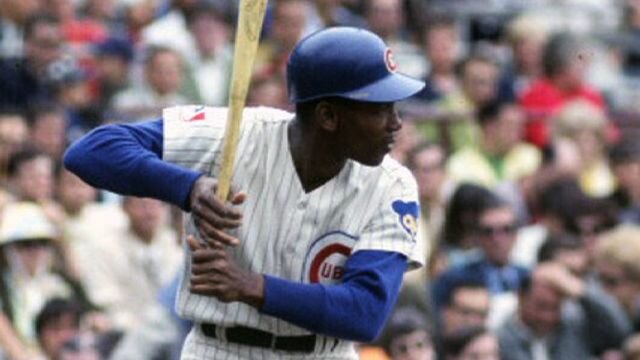Bud Selig Is The Greatest Commissioner In MLB History
After a 22-year reign as the boss of MLB, Bud Selig has officially retired from baseball. Selig is now the second-longest tenured MLB commissioner since Kenesaw Mountain Landis, who held the role from 1920-1944.
His career in baseball began when he purchased the Seattle Pilots franchise and moved them to his hometown of Milwaukee, renaming the team the Milwaukee Brewers. Following the resignation of previous commissioner Fay Vincent, Selig stepped down from his ownership duties and became the acting commissioner of MLB in 1992.
Surely, Selig has had his dark moments in baseball. There was the 2005 steroid scandal on Capitol Hill. His lowest moment was likely the 1994 player strike, which led to canceling the World Series that year. However, when looking at his career accomplishments overall, it is safe to call him the greatest commissioner in MLB history.
Selig’s first order of duty was realignment of the teams into three divisions per league, and implementing Wild Card teams in the MLB postseason. This allowed for more postseason baseball, with eight teams participating in postseason play instead of the original model of four teams. The formula worked as ballpark revenue increased during the postseason, which eventually led to the addition of a second Wild Card playoff team in each league during the 2012 season.
Since the introduction in 1994, a total of 10 Wild Card teams have played in the World Series.
Before Selig held office, the only time an AL and NL team played against each other in an official game was during the World Series. For the 1997 season, Selig introduced interleague play. This allowed fans to see crosstown rivals compete against each other during the regular season.
In 1998, MLB introduced two new expansion teams, the Arizona Diamondbacks and Tampa Bay Devil Rays. There have been a total of 22 new baseball stadiums opened during the Selig era. This led to an increase in revenue for owners who were introduced to revenue-sharing by Selig. There is an estimated $400 million in revenue-sharing amongst owners. MLB owners are no longer competing against each other, but instead collaborating.
When Selig first entered office in 1992, baseball was a $1.2 billion industry. Today, MLB is on it’s way to becoming a $9 billion industry. The majority of MLB franchises are worth an estimated $1 billion, and some exceed that figure. The Guggenheim Partners purchased the Los Angeles Dodgers for a record-setting $2 billion in 2012.
There has also been a huge progression in attendance. Before 1992, nearly half of MLB teams were bringing in less than $2 million from fans per season. Today, all 30 baseball clubs averaged an estimated $2.5 million fans in attendance per season. There are a total of eight teams with attendance exceeding over $3 million fans per season.
With the increased revenue and ballpark attendance, MLB owners are able to afford to pay their star players healthy salaries. Before Selig’s tenure, the highest-paid baseball player was Bobby Bonilla, who was making an annual salary of $5.8 million in 1991 after signing a record-setting five-year, $29 million contract. Today, Miguel Cabrera is making an average annual salary of $31 million, and slugger Giancarlo Stanton just signed a 13-year, $325 million contract.
The financial state of baseball has never been healthier, and it is all thanks to Selig’s new and improved ideas. As for new MLB commissioner Rob Manfred, expect him to address changes in the game in order to improve the product. Manfred is expected to look into the pace of play, marketing star athletes, and bringing in a younger generation of fans. His mentor Selig has set the bar high and is a lock to enter the Baseball Hall of Fame.
Adam Holguin is a MLB writer for rantsports. You can like him on Facebook and follow him on Twitter.
Toronto Blue Jays 2015 Bullpen Roles
While the Toronto Blue Jays have not made many moves to their bullpen, they have talent that could make them strong. Here is a look at their 2015 roles. Read More
Minnesota Twins' Bullpen Roles For 2015
The Minnesota Twins' bullpen has many unknown names, but plenty of options from both sides of the mound. Here is a look at their 2015 bullpen roles. Read More
Niese Shouldn't be Overlooked aong Mets' Rotation
Although Jonathon Niese is often overlooked when it comes to New York Mets pitchers, he's really much better than given credit for. Read More
Predicting Bullpen Roles For the Oakland A’s
The Oakland Athletics bolstered their bullpen with the addition of Tyler Clippard this offseason, and figure to be in contention yet again in 2015. Read More
Predicting Bullpen Roles For Los Angeles Angels
What role will each player in the Los Angeles Angels' bullpen have in 2015? Find out here! Read More
Predicting Bullpen Roles For the Chicago White Sox
What role will each player in the Chicago White Sox's bullpen have in 2015? Find out here! Read More
Predicting Bullpen Roles for the SF Giants
The San Francisco Giants flaunt one of the strongest bullpens in baseball, headlined by underrated closer Santiago Casilla. Read More
Predicting Bullpen Roles For Kansas City Royals
What role will each player in the Kansas City Royals' bullpen have in 2015? Find out here! Read More
Predicting Bullpen Roles For the Boston Red Sox
What role will each player in the Boston Red Sox's bullpen have in 2015? Find out here! Read More
Predicting Bullpen Roles For the Baltimore Orioles
What role will each player in the Baltimore Orioles' bullpen have in 2015? Find out here! Read More
Philadelphia Phillies' 2015 Bullpen Roles
What role will each player in the Philadelphia Phillies' bullpen have in 2015? Find out here! Read More
Predicting Bullpen Roles For Tigers In 2015
Here is one way the Detroit Tigers bullpen may shake out for manager Brad Ausmus in 2015. Read More






















